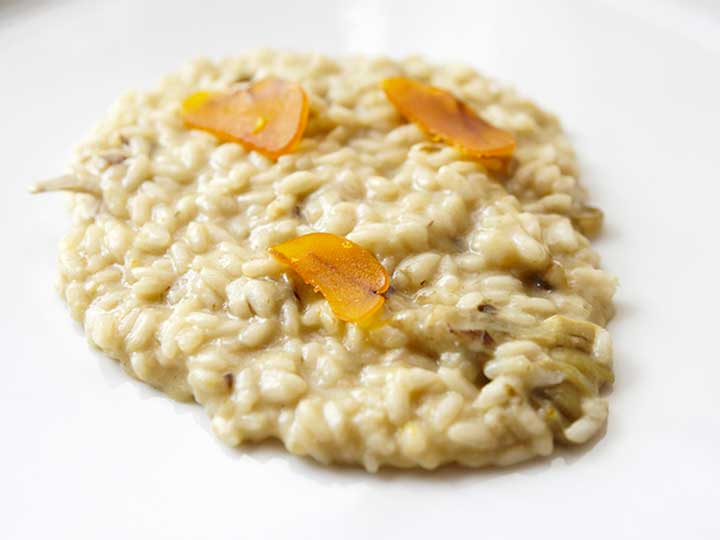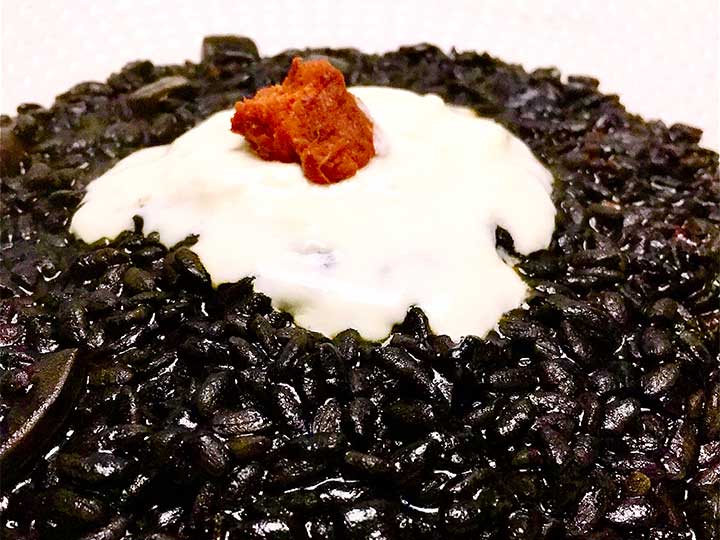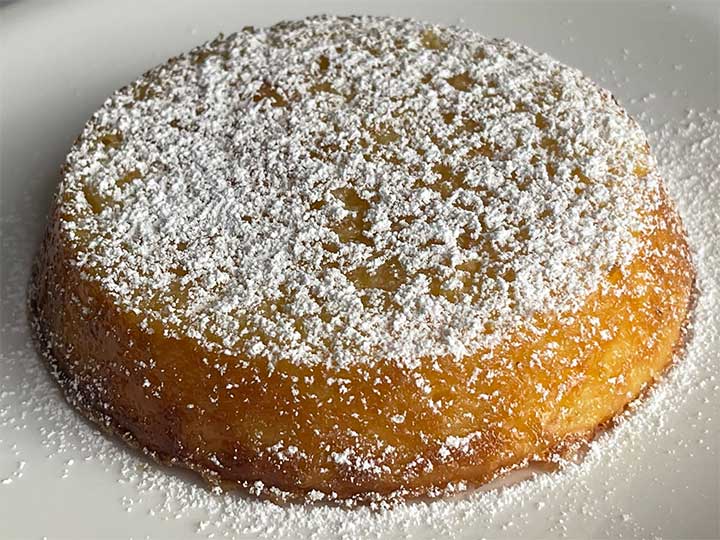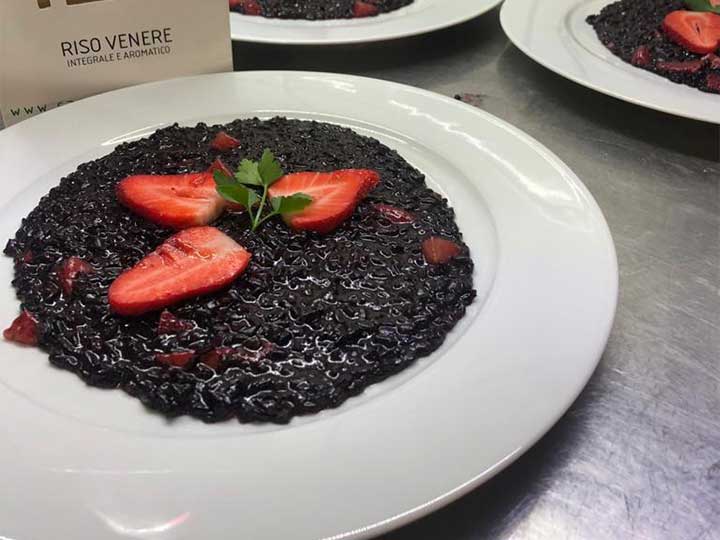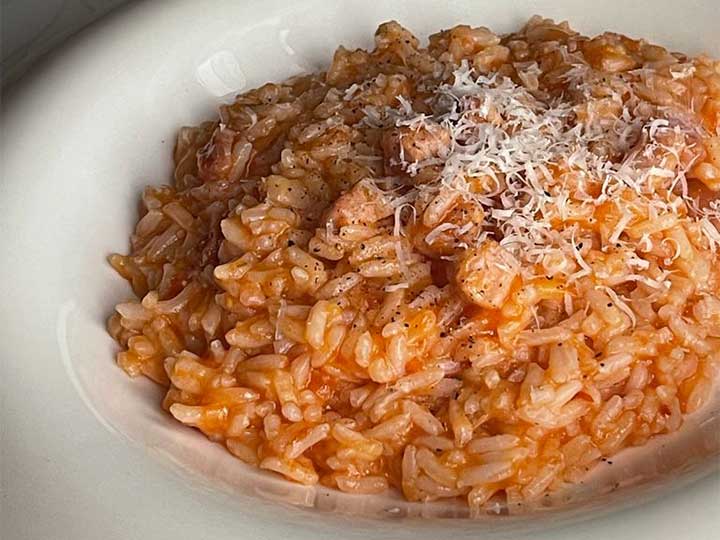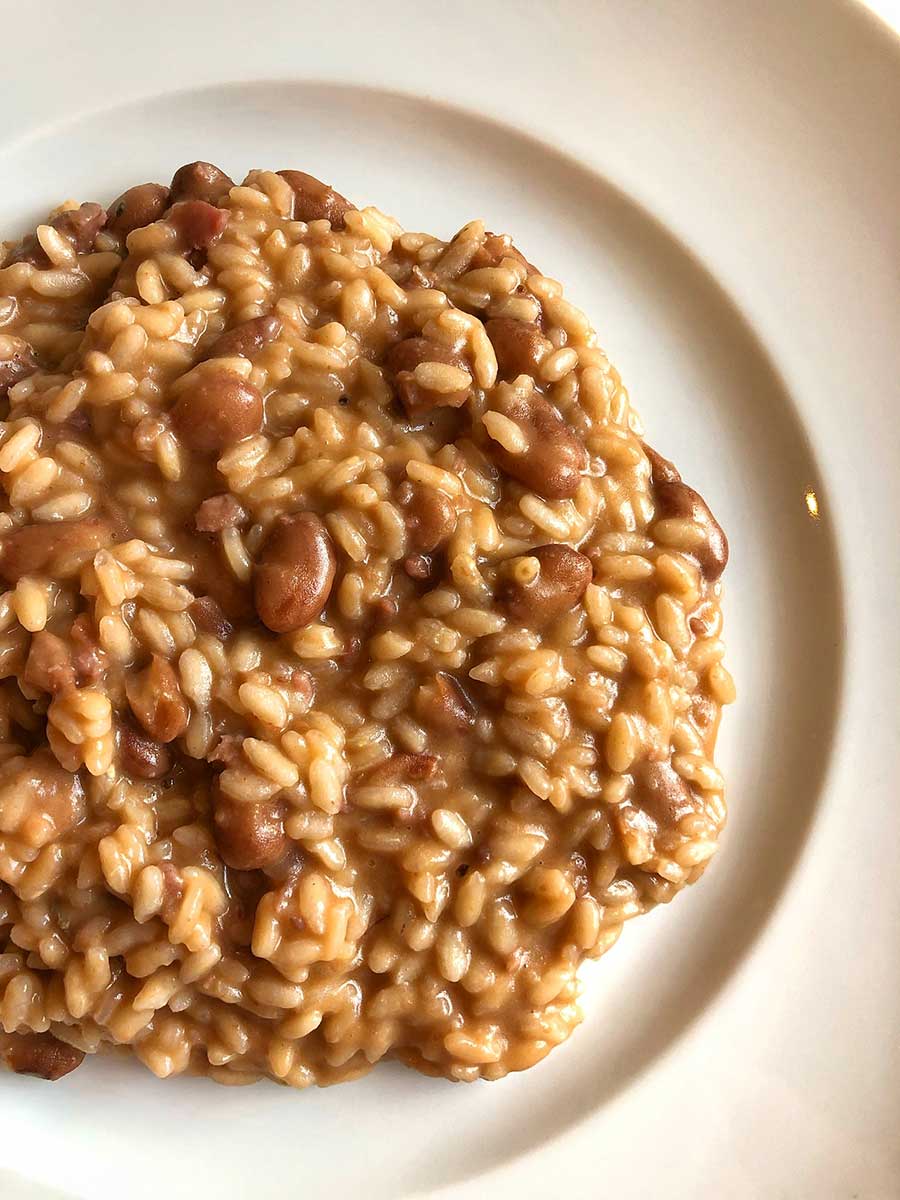CLASSIC CARNAROLI RICE WITH PORCINI MUSHROOMS AND MEADOW HERBS
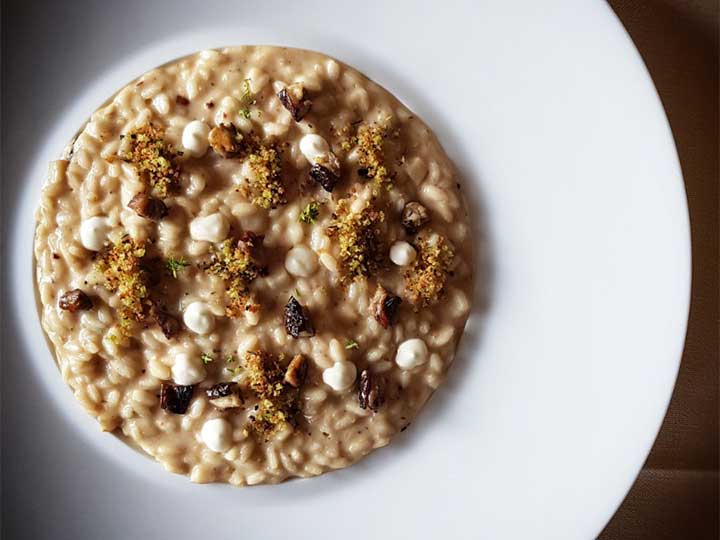
4 servings:
Cascina Oschiena Classic Carnaroli Rice 1 3/4 cups (300gr)
fresh porcini mushrooms 12oz. (approx. 4 cups)
pecorino cheese 1/2 cup freshly grated
fresh cream 1/2 cup
butter 2 tablespoons
parmigiano reggiano cheese 1/3 cup freshly grated
rosemary 2 sprigs
thyme 1 small bunch
parsley 2oz. finely chopped
catmint 2oz. finely chopped
garlic 3 cloves
tuscan-type bread 5oz.
extra-virgin olive oil to taste
salt and pepper to taste
Preparation of the porcini mushroom cream:
Cut 3/4 of the porcini mushrooms into large cubes. Season with salt, pepper, oil, some of all the herbs except the parsley, and 2 crushed cloves of garlic. Cover everything with tinfoil and cook in the oven (a wood oven is ideal) for around 20 minutes.
Leave to cool inside the tinfoil and then add a little olive oil before blending into a cream.
Preparation of the cheese sauce:
Bring the cream to the boil and add the pecorino cheese. Remove from the heat and allow it to melt, and then blend the mixture into a smooth cream, before adding some freshly ground black pepper. Leave to cool inside a cream piping bag.
Preparation of the aromatic bread:
Cut the bread into small cubes and brown them in plenty of hot oil flavored with garlic. Add salt and pepper.
When the bread is nice and brown, add all the herbs except the parsley and put it in the oven to dry.
When the bread is golden and dry, blend it together with the parsley. As soon as it cools down add a little salt and oil and leave it to dry again, close to the oven if possible.
Cooking and serving:
Brown the remaining mushrooms, having cut them into small pieces, add and toast the rice, without oil. Then cook by adding a little boiling water at a time. After about 11 minutes add the cream of mushrooms and cook for another 2 minutes. Remove from the flame, add the butter and parmigiano cheese and mix well until you obtain a creamy risotto.
Serve on a warm plate and garnish with drops of cheese sauce and some pieces of aromatic bread
